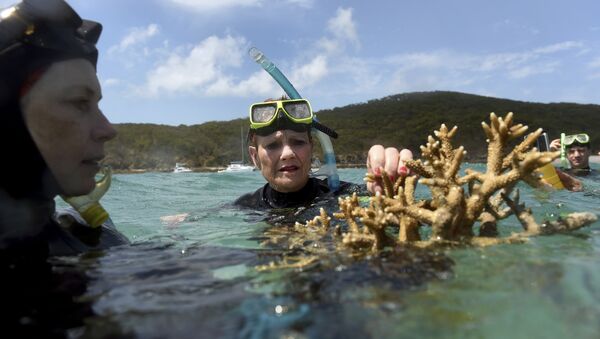A newly released report by Australia's independent Climate Council warns that further damage to one of the country's top tourist attractions — the 2,300-kilometer-long (1,400-mile) Great Barrier Reef — could result in more than a million people a year choosing alternative holiday destinations.
The council's ecologist Lesley Hughes said in a statement that severe bleaching shouldn't be viewed as a strictly environmental issue, for it also has a negative impact on the economy.
"[The reef] responsible for bringing in more than AU $7 billion each year to our economy, while also supporting the livelihoods of around 70,000 people," Hughes said.
Scientists said this week that the bleached coral had no chance of prompt recovery. Even if parts of the reef hurt by bleaching bounce back, it could take up to ten years for even the fastest-growing corals to recover.
"If coral bleaching persists, tourism areas adjacent to the Great Barrier Reef risk declines… from 2.8 million visitors to around 1.7 million per year," the study said, citing analysis by the Australia Institute think tank, based on interviews with more than 3,000 Chinese, US and UK visitors, as well as 1,400 domestic tourists.
"This is the equivalent of more than AU$1 billion in tourism expenditure, which supports around 10,000 tourism jobs in regional Queensland."
The natural wonder is experiencing its fourth mass bleaching, after previous events in 1998, 2002 and 2016.
The council has urged the government to reconsider its energy and climate policies to abate the destructive effects of climate change.



